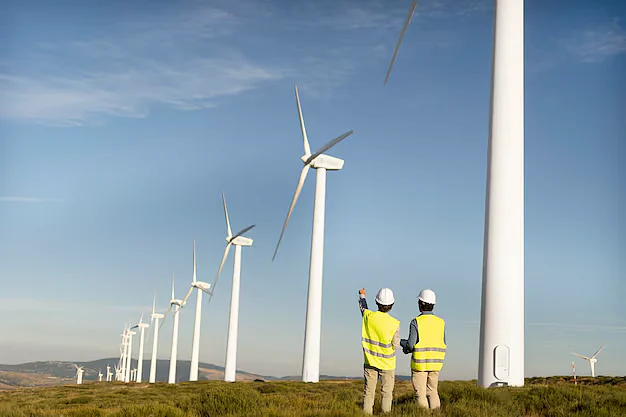India is set to witness a significant rise in clean energy technology capacity by 2030, aiming for full self-sufficiency in solar and wind energy, projects S&P Global Commodity Insights. However, the country might miss the target owing to lack of technological innovation and skilled labour, the report says.
S&P’s projections indicate that India will reach 107 gigawatts (GW) in photovoltaic modules, 20 GW in wind nacelles, 69 GWh in battery cells and 8 GW equivalent (GWe) in electrolyzers. “This growth will enable India to achieve full self-sufficiency in solar PV [photovoltaic] and wind and over 90 per cent in battery cells,” said Indra Mukherjee of S&P Global Commodity Insights.
Advertisement
The Union government’s target is to establish 500 GW or 50 per cent of electric power from non-fossil fuel-based energy resources by 2030. The targets also include production of 5mn tonnes of green hydrogen and installation of 30 GW of offshore wind capacity. Keeping on track with 2030 goals, the aim is to achieve net-zero carbon emissions by 2070.
Government Measures and Challenges
To promote local manufacturing, the government has introduced tariffs on imported goods like basic customs duties and goods and services tax along with approved manufacturer and model lists. Production linked incentive scheme is among the other measures to promote domestic production and innovation within the sector.
Advertisement
The report, lauding these policies, says that these are expected to drive substantial growth in India's clean energy capacity by 2030.
The report enlists the challenges coming in the way of achieving clean energy goals some of which include technological innovation gaps, skilled labour shortages, inadequate infrastructure and inconsistent policy enforcement.
In the solar sector, India struggles to meet its polysilicon and wafer production goals, which hampers its competitiveness. India’s wind turbine product mix needs alignment with global standards for export, and its nascent offshore wind sector requires further investments.
Amitabh Kant Wants India to Aim Higher
This comes at a time when Amitabh Kant, the former CEO of NITI Aayog, said that India should aim to achieve 750 GW of renewable energy capacity and should be able to become a clean energy exporter by 2030.
There may be a lack of projects, but there is no shortage of funds in the world, Kant said. $150trn is available with sovereign wealth funds and pension funds, he added.
At present, the country has around 440 GW of total installed electricity capacity which includes around 190 GW from non-fossil energy sources, according to data from Ministry of New & Renewable Energy. The data also showed that the total solar installed capacity tops the chart at 81.81GW, followed by about 46 GW of wind energy.















 Just one email a week
Just one email a week